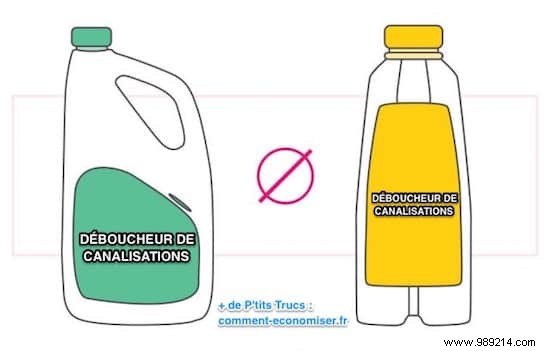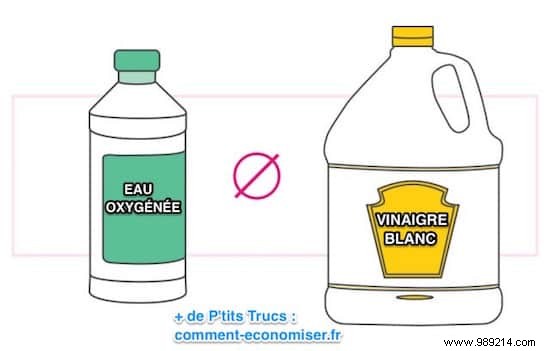
Everyone has cleaning supplies at home.
Normal, because they are essential for cleaning.
The problem is, you can quickly get frustrated when trying to clean a particularly stubborn stain that won't come out.
And there, we tend to want to play the chemist and try to use ALL the products at hand to make this damn stain disappear!
But did you know that mixing certain products can present a real danger? for your safety and that of your family?
Do you know the list of cleaning products you should never mix?

Yes, when you mix certain cleaning products, it can cause dangerous chemical reactions , such as toxic fumes .
And even when a specific product is not toxic on its own, one cannot predict the chemical reaction it will have when mixed with another product.
This is why you should avoid pouring your entire arsenal of products on a stubborn stain...
Always read warnings on cleaning products… and NEVER, EVER mix the following products:

Never mix 2 unblockers of different brands even one after the other when trying to unclog a drain.
Drain cleaners contain powerful chemicals that can potentially explode when mixed.
For safe use, use only ONE product and follow the instructions on the bottle (usually half a bottle per blocked pipe is enough).
If the first unblocker did not work, do not try to use an another unblocker.
In any case, here is a good reflex to adopt before using chemical products such as drain cleaners.
We advise you to try these 7 effective and natural tricks to unclog any drain.

Perhaps you already knew the use of hydrogen peroxide and white vinegar?
Indeed, these 2 products have several surprising uses.
For example, they facilitate the preservation of fruit and allow you to disinfect the surfaces of your home.
As long as you alternate the use of these 2 products, there is no risk.
On the other hand, even if it is tempting, NEVER mix these two products in the same container.
Mixing hydrogen peroxide and white vinegar creates peracetic acid.
Peracetic acid is very powerful oxidizing agent and highly toxic for skin, eyes and mucous membranes.

On paper, you would think that the combination of these 2 cleaners would produce a new, even more disinfectant product.
But in reality, their mixture produces chlorine gas.
This gas has a particularly unpleasant suffocating odor, and is extremely toxic .
Even at low doses, it can cause coughing spells, respiratory problems, burning and tears.
Exactly, do you know the homemade recipe for the alternative to bleach?

Mixing bleach and ammonia produces the poisonous gas, chloramine.
As toxic as the mixture of bleach and white vinegar...
This combination also causes breathing difficulties and chest pain .
Please note that many glass cleaners contain ammonia.
Therefore, never mix them with bleach.
And in any case, try to avoid bleach as much as possible! There are great natural alternatives like these.

Mixing bleach and ammonia produces chloroform.
You have surely seen the use of this gas in the cinema!
This is the liquid that kidnappers use on their handkerchiefs to make a victim pass out.
Although this mixture is unlikely to be potent enough to knock you unconscious...
However, it is highly toxic and irritating when inhaled or absorbed.
Be aware that bleach should NEVER be mixed with any other product except water.
Similarly, some cleaning products contain acids and ammonia which should not be mixed with bleach.
This is the case for window cleaners and toilet cleaners, for example.

Of course, baking soda and white vinegar are essential ingredients in many homemade cleaning products.
On the other hand, be aware that you should NEVER STORE this mixture in a closed container , because it may explode.
Why ? Because the pH of bicarbonate is alkaline while that of vinegar is acidic.
Mixed together, they mainly produce water, but also sodium acetate.
This reaction is very useful for certain household stains and stubborn stains such as dog pee.
But remember that this mixture should not be stored in a container under the sink.